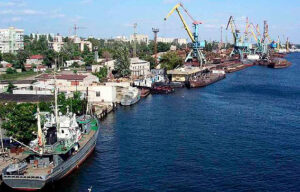
State-owned PrivatBank again topped the list of the most profitable banks in June 2023 with a net profit of UAH 4 billion 607.1 million, but this time the state-owned Oschadbank, which is second in terms of assets, also showed a commensurate profit – UAH 4 billion 269.9 million.
According to the data released by the National Bank of Ukraine on its website, the top five banks with the highest net profit in June also included Sense Bank, nationalized in late July, with UAH 745.5 million, FUIB with UAH 690.2 million and Ukrsibbank with UAH 671.6 million.
The second five were formed by Citibank – UAH 485.3 million, Ukreximbank – UAH 439.7 million, Ukrgasbank – UAH 411.1 million, Credit Agricole Bank – UAH 393.6 million and OTP Bank – UAH 285.4 million.
Profit over UAH 200 mln was obtained by three more banks: Universal Bank (mono) – UAH 256.7 mln, ING Bank Ukraine – UAH 229.3 mln and Credobank – UAH 219.0 mln.
Among these 13 banks, the largest reserves in May were discharged by FUIB – UAH 1 billion 209.2 million, Privat – UAH 402.9 million, Sens – UAH 303.6 million and Oschadbank – UAH 222.4 million.
Oschad’s success in June was due to a sharp improvement in its trading result: it amounted to UAH 236.9m in the half-year period, while the loss on this item reached UAH 3.3bn at the end of the month.
The list of 17 loss-making banks in June (there were nine such banks in May) was headed by Raiffeisen Bank – UAH 142.9 mln, which added UAH 1 bln 142.3 mln to its reserves. It is followed by Globus – UAH 55.7 mln, Sky Bank – UAH 46.9 mln and Pravex Bank – UAH 36.6 mln.
Overall, in June 2023, banks’ net profit rose to UAH 14.06 billion from UAH 9.59 billion in May and UAH 9.94 billion in April. Excluding Privat and Oschad, net profit of banks in June UAH 5.18 billion against UAH 4.83 billion in May.
While in May the growth of total assets of all banks slowed down to UAH 2.23 billion from UAH 61.53 billion in April, in June it accelerated again to UAH 65.57 billion due to the growth of Privat by UAH 19.51 billion, Oshchad by UAH 11, 09 billion UAH, Ukrsibb – by 5.99 billion UAH, FUIB – by 5.7 billion UAH, Ukrexim – by 5.07 billion UAH, Pivdennyi – by 4.58 billion UAH, Credit Agricole Bank – by 4.17 billion UAH and Raif – by 3.23 billion UAH.
However, the leaders in terms of relative increase in assets in June were SEB Corporate Bank – by UAH 1.28 billion, to UAH 6.64 billion and Ukrbudinvestbank – by UAH 0.5 billion, to UAH 2.47 billion/
The most significant relative decrease in assets in June was demonstrated by Alliance Bank – by UAH 1.41 billion, to UAH 12.42 billion, Deutsche Bank DBU – by UAH 0.77 billion, to UAH 5.11 billion and Bank 3/4 – by UAH 0.21 billion, to UAH 1.52 billion.
In general, following the results of the first half of 2023, PrivatBank remains the most profitable bank by a wide margin – UAH 29.75 billion, or 44.0% of the total net profit of the country’s banking system for this period.
June results allowed Oschad to take the second place with UAH 6.84 billion, while Raif dropped to the fifth place with UAH 3.12 billion, having also missed FUIB with UAH 3.68 billion and Ukrsib with UAH 3.56 billion.
In the second five are OTP Bank – UAH 2.85 billion, City – UAH 2.76 billion, Ukrgas – UAH 2.60 billion, Sense – UAH 2.14 billion and Ukrexim – UAH 1.98 billion.

Ukraine lacks a system of providing palliative care to elderly patients with diabetes, says Nataliya Kozhan, executive director of the Ukrainian Diabetes Federation.
“In our country, unfortunately, at present, practically no attention is paid to the provision of palliative care for this category of patients. I very often encounter such patients, working at the Department of Palliative and Hospice Medicine at the Shupyk University. Shupyk, and I hear from patients that medical workers and doctors, even with a severe course of diabetes and with a high level of pain, do not offer measures of palliative care,” she said during a round table in Kiev.
At the same time, Kozhan emphasized that “unfortunately, to date, there are no recommendations from the WHO on the provision of such care.”
“We do not have clinical protocols for providing this care, but it should be dealt with,” she said.

Anyone who has been here at least once will definitely want to come back again.
Zakarpattia is a picturesque region in southwestern Ukraine. Anyone who has visited it once will definitely want to come back again, because it is rich in thermal springs, attractions, opportunities for winter and summer sports and recreation. And the thermal waters of Zakarpattia have been known for several centuries, and it is thanks to them that the region has become such a popular resort, where thousands of guests come every year to improve their health.
The Carpathian Mountains are adorned by the small but cozy village of Kamianytsia, which is located in the valley of the Uzh River at an altitude of 100 meters above sea level. The village is surrounded by the slopes of the Vyhorlat-Hutyn and Uzhhorod-Khust volcanic ranges. Volcanic lava can be seen on the Antalovetska Polyana mountain and the Eagle’s Nest rocks and in the area of the Nevytskyi Castle. The history of the castle dates back to the twelfth century, and you can get to it in a matter of minutes by crossing a pedestrian suspension bridge and walking up the path.
People come here from all over Ukraine and many neighboring countries not only to get treatment, but also to relax and enjoy the nature of the picturesque Carpathians. This is a land rich in legends, natural and architectural monuments.
Kamianytsia is worth a visit, especially if you want to relax your body and soul, away from the bustle of the city. Even a few days spent here will recharge you with the energy of the mountains for a long time, help you find harmony and peace. You can climb into the mountains and have a picnic against the backdrop of beautiful landscapes. Or take a walk by the Uzh River, listening to its soothing murmur. And in the evening, enjoy a cup of tea made from fragrant herbs while admiring the stars.
For lovers of active recreation, Kamianytsia will offer hiking, rafting, horseback riding, and a breezy ride through the hills on ATVs. In winter, there is also something to do here besides hiking and skiing, once you get here.
One of the pearls of Kamianytsia is the Verkhovyna Resort Medical & Wellness complex, located on top of a mountain 260 meters above sea level, just 15 km from Uzhhorod.

The symbiosis of a five-star hotel, a medical center, a SPA complex, swimming pools, conference rooms, restaurants, bars, panoramic terraces and other opportunities for recreation and relaxation at Verkhovyna Resort Medical & Wellness guarantees guests bright moments, unforgettable impressions and the best service. And the surrounding forest, crystal clear air and mountain water have healing powers.

Verkhovyna Resort Medical & Wellness offers accommodation in 77 spacious rooms, which are thoughtfully furnished for the most comfortable stay during the period of rest and recovery. The unique design of the rooms is a synergy of history, modern trends, aesthetics and functionality.

You can stay either in the Presidential Suite, which will satisfy even the most demanding guests, or in a spacious two-room suite for a comfortable stay with the whole family. And for those who like forest landscapes combined with a comfortable rest for body and soul, a standard room is perfect.
Spa and swimming pool
The unique world of saunas in the SPA Gallery offers complete relaxation, recovery and rest in exclusively designed and equipped in accordance with the latest trends in SPA rooms, a swimming pool, a relaxation area with anatomical loungers, and a phyto-bar. An unrivaled team of wellness professionals will create an individualized program that you will definitely enjoy.


Pool Palace allows you to enjoy swimming in comfort at any time of the year.
In summer, the Pool Palace has an outdoor Infinity pool: you can choose to sunbathe on the panoramic terrace, have a meal and relax at the Sky bar.

The main swimming pool impresses with its size, stylish design and panoramic views of the forest opening from the huge windows. A feeling of complete unity with nature and maximum comfort.
The pool is suitable for both relaxing swimming and training.
Sports
For guests who do not want to part with sports for a minute, equipment for all types of exercise is available.

Regular or occasional sports activities in the spacious gym with panoramic windows and a terrace will make your stay even more enjoyable. The hotel has everything you need to stay in shape, work on muscle mass and rehabilitation.
Restaurant service
Verkhovyna Resort offers the most delicious European and local cuisine, the best world drinks and desserts. Two luxurious restaurants, three bars and a VIP lounge will enchant you with their interior, atmosphere and unforgettable flavors.

An entertainment center with bowling and billiards and lounge areas will make your evening even more sincere and unforgettable.
Verkhovyna Resort Medical & Wellness is the first and only five-star hotel in Zakarpattia. All this became possible thanks to the unique architecture, comfortable rooms, painstaking work of people who created the exclusive design of the premises and territory, as well as an incredible team that daily keeps the bar high and provides quality services that exceed expectations and ensure an unforgettable vacation for each guest.
Book a room at the hotel
+38 (050) 202-10-99
+38 (0312) 65-83-43
+38 (050) 202 10 75

Summer is a great time to go on an unforgettable trip.
Today, most Ukrainians choose to vacation in the Carpathians. There are many modern recreation centers in the mountains. You will find not only healing air and unique nature, but also European quality of service.
One of these health resorts is the Derenivska Kupil sanatorium complex, located in the village of Nyzhnye Solotvyno, in the foothills of the Carpathians, among the colorful landscapes of the Derenivka tract. The complex consists of two hotels – Iris Hotel and an apartment hotel, and a third hotel, a SPA hotel, will be opened soon.
The complex has restaurants, SPA-zones and active recreation areas. The pearl of this health resort is a luxurious botanical garden and a unique sculpture park.
Spa resorts are located around the unique healing springs. In any of them, you can not only improve your health, but also get excellent relaxation.
The Derenivska Kupil sanatorium complex is a place where rest is well combined with treatment. The complex offers a wide range of wellness, spa and medical programs; a variety of locations for accommodation, leisure and catering; mineral water containing unique trace elements, thermal springs; healing climate, clean air and good ecology, as the complex is located in the middle of an ancient forest.
The thermal springs of the resort, located in the mountains among coniferous trees, have a beneficial effect on the health of vacationers: they treat diseases of the respiratory system, circulatory system, musculoskeletal system, metabolic disorders.
International quality certificate EuropeSPA MED
The Derenivska Kupil sanatorium is the only resort in Ukraine that has the EuropeSPA MED international quality certificate.
The EuropeSpa Med certificate is a confirmation that Derenivska Kupil’s comprehensive approach to health improvement is of the highest quality and combines advanced medical technologies, diagnostic and therapeutic methods, care and spa procedures. Here you have a unique opportunity to enjoy European-quality recreation and natural healing springs!
Wellness SPA and swimming pools
The Iris Wellness Complex offers a unique range of treatments for health improvement and face and body care. For this purpose, the healing properties of Derenivska water, modern hardware technologies and cosmetics of well-known European brands are used.

It’s hard to imagine a modern vacation without water activities. Thanks to water treatments, you can not only improve your health, but also get excellent relaxation. And not only in summer! Such procedures are available all year round. In the cold season, it is pleasant to spend time in a cozy SPA, warm up in a bathhouse or sauna, soak in a hot tub or thermal pool.
There are two aqua locations in the Derenivska Kupil sanatorium complex. One is located in the Iris health complex. It offers an indoor pool, Finnish sauna, balneological baths, and a lounge area. The second one is located in the Silver Therms SPA complex, which consists of an outdoor pool with a pool bar, a semi-outdoor thermal pool with hydromassage, an infinity pool and a SPA area.
Gastronomic service
The restaurants of the Derenivska Kupil sanatorium complex have a cozy atmosphere. The chef of the restaurant constantly pampers guests with exclusive and incredibly delicious dishes that will surprise even the most demanding gourmets.

Salamander and Iris restaurants are equipped with the latest kitchen appliances. Only environmentally friendly products from our own farmland are used in the preparation of dishes. A unique feature of the restaurants is cooking exclusively on the basis of natural drinking and mineral water, which is extracted directly on site. The menu offers local cuisine in European variations.
In the summer, guests who rest in the SPA-complex “Silver Thermae” can order dishes in the Salamander Cafe, famous for its masterpieces and light dishes with an accent of Italian cuisine.
Accommodation
All you have to do is choose and book a room in Derenivska Kupil and you are guaranteed a wonderful vacation. And there is plenty to choose from! We offer 130 stylish modern rooms in the four-star Iris Hotel and 44 comfortable apartments in the Apartment Hotel. A five-star SPA-hotel of the Deluhe level will soon start receiving guests.

When accommodating guests, their needs and wishes are taken into account. The rooms of the Derenivska Kupil sanatorium complex are decorated in accordance with modern European design trends – everything is very sophisticated and respectable. Just choose a room and enjoy a comfortable stay among the colorful landscapes of the Carpathians.
You can book a room on the website, by phone or in social networks:
+38 (0312) 42 80 60
+38 (050) 400 01 88
Email: reservation@derenivska-kupil.ua
Ukraine, Transcarpathian region, Nizhne Solotvyno, 150

The Cabinet of Ministers of Ukraine has decided to reorganize the state enterprise Kherson Sea Trade Port by means of its merger with the state enterprise Olvia Stevedoring Company, according to the government’s representative in the Verkhovna Rada Taras Melnychuk.
“The proposal of the Ministry of development of communities, territories and infrastructure on reorganization of the state enterprise “Kherson sea trade port” by its accession to the state enterprise “Stevedoring company “Olvia” is agreed,” – wrote Melnychuk.

The former Rosinka plant in Kiev was sold together with its property at two auctions for a total of UAH 138.5m.
According to information on the site “Prozorro.Sales”, on August 3, an auction was held to sell part of the plant’s property with a starting price of UAH 11.1 million, and on August 9 – the rest of the property for UAH 108.5 million.
The winner of both auctions was Kyiv Plant Rosinka LLC, which offered UAH 23 million at the first auction and UAH 115.5 million at the second.
According to Opendatabot, the owner of the company is the Cypriot Alviva Group Ltd, the beneficiary of which is the former deputy of Kyiv Council Vyacheslav Suprunenko.
The total area of the property complex of the plant is 22.5 thousand square meters. m.
Auctions were organized within the framework of the liquidation of PJSC “Rosinka”, declared bankrupt by the ruling of the economic court of Vinnytsia region in 2018.
As reported, in March 2023, LLC “Financial Company Rickard” acquired at auction the right of claim under the loan agreement of the liquidated MR Bank (formerly – Sberbank, Kiev) with collateral in the form of Kiev plant “Rosinka” with equipment for 129.7 million UAH.